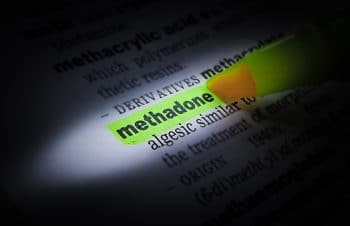Methadone

What Is Methadone?
Methadone is a synthetic Opioid that has been prescribed to treat chronic pain and Opioid dependency for decades. This prescription drug acts on the same receptors as Morphine and Heroin, helping minimize withdrawal symptoms during Opioid detox and substance abuse treatment. Its effects are non-euphoric, but they are sedative and can be addictive; therefore, its accessibility is limited to practitioners, clinics, and pharmacies licensed by the Food and Drug Administration.
Effects of Methadone Use
When taken as prescribed, Methadone is safe and effective in reducing Opioid cravings while blocking the effects of other Opioids. If someone who is being treated attempts to use Heroin, the Methadone will block the euphoric effects and thus, reduce cravings for the illicit Opioid. On the other hand, the drug can have other effects including:
- Mild sedation
- Decrease in reaction time and attention span
- Drowsiness
- Dry mouth
- Muscle Weakness
- Decreased body temperature and blood pressure.
It is important to avoid overmedication because it can lead to intoxication or an overdose. Side effects are to be taken seriously and usage should be stopped immediately if the patient experiences:
- Difficult breathing
- Lightheadedness or fainting
- Rashes, hives, or swelling
- Chest pain
- Increased heartbeat
- Hallucinations or confusion
The use of Methadone for Opioid detox is highly regulated and can only be prescribed for withdrawal at a Substance Abuse and Mental Health Services (SAMHSA)-certified Methadone clinic. The synthetic Opioid is available in pill, powder, and liquid form and should never be administered without a health professional or a prescription.
Methadone Addiction
While Methadone is used in Medication Assisted Treatment (MAT) as a way to curb Opioid addiction, it is still a heavily regulated drug with potential to become addictive. Patients who are prescribed must be monitored while receiving MAT in order to avoid dependency or a possible overdose. Those who start using Methadone in order to overcome another Opioid addiction are at a higher risk of abuse than those who use it for chronic pain management. The dosage for pain management varies from person to person, but a normal adult dosage is typically 2.5 to 10 mg every 3 to 4 hours as needed. The use of Methadone without a prescription or using more than the amount prescribed is dangerous and an abuse of the medication.
Consequences from overusing include apnea, respiratory failure, and hypoxia that can lead to coma, seizures, hypotension, or even death. During MAT it is extremely important for those who are using Methadone to refrain from using other Opioids because of the very high risk of overdose. Methadone overdose can only be reversed with a medication called NarCan, which uses the Opiate antagonist, Naloxone.
Treating Methadone Addiction
Overcoming Methadone addiction is as difficult as any other Opioid dependency. Detoxing from Methadone can also be extremely uncomfortable due to its withdrawal effects that include nausea, vomiting, and muscle cramps. Buprenophine is sometimes used to ease symptoms of withdrawal and shorten detox time. When treating Methadone addiction, medical experts will typically use the weaning or tapering approach. This approach of slowly decreasing Methadone dosage should only be done under the supervision of a certified medical expert that knows how to regulate dosing and prevent overmedication. When seeking help to end addiction, it is important to get an evaluation from a substance abuse counselor. Treatment will depend on the level, frequency, and intensity of the Methadone addiction and will begin with a detox period, followed by inpatient or outpatient treatment.
Methadone in Opioid Detox
Methadone is most commonly used during Opioid detox to manage withdrawal symptoms; the dosage is then tapered until the patient reaches a substance-free state. When used for detox, the initial doses are usually at 10 to 20 mg and increased in 10-mg increments until withdrawal symptoms are controlled. The initial dose is determined by estimating the amount of Opioid use, physical examinations, and gauging the patient’s response to the administered amount. Sedation or intoxication after a dose indicates the need for a lower starting dose. Individual tapering schedules can range from weeks to months. Once a dose has been established to eliminate withdrawal symptoms, the patient is then stabilized with the same dose for 2 to 3 days. After that, a 10% to 20% dose reduction is applied daily or every other day. Patients in medication-assisted treatment during Opioid detox should be monitored for withdrawal symptoms after discontinuing its use, as symptoms can sometimes appear 48 to 72 hours after the last dose.
Methadone in Maintenance Therapy
Maintenance therapy is the long-term administration of Methadone to treat Opioid Use Disorder. The goal of maintenance therapy is to substitute Methadone for the Opioid that is being abused. Dosage typically starts at 10 to 20 mg while increasing in 10 mg increments until Opioid withdrawal symptoms are controlled. Most patients are able to control symptoms at 40 mg a day. This approach has been shown to reduce Heroin use, decrease the spread of diseases commonly contracted through needle sharing (such as HIV and hepatitis), reduce criminal activity, and improve social outcomes. Maintenance therapy is a good way to help people with severe Opioid addiction reintegrate as functional and healthy members of society.